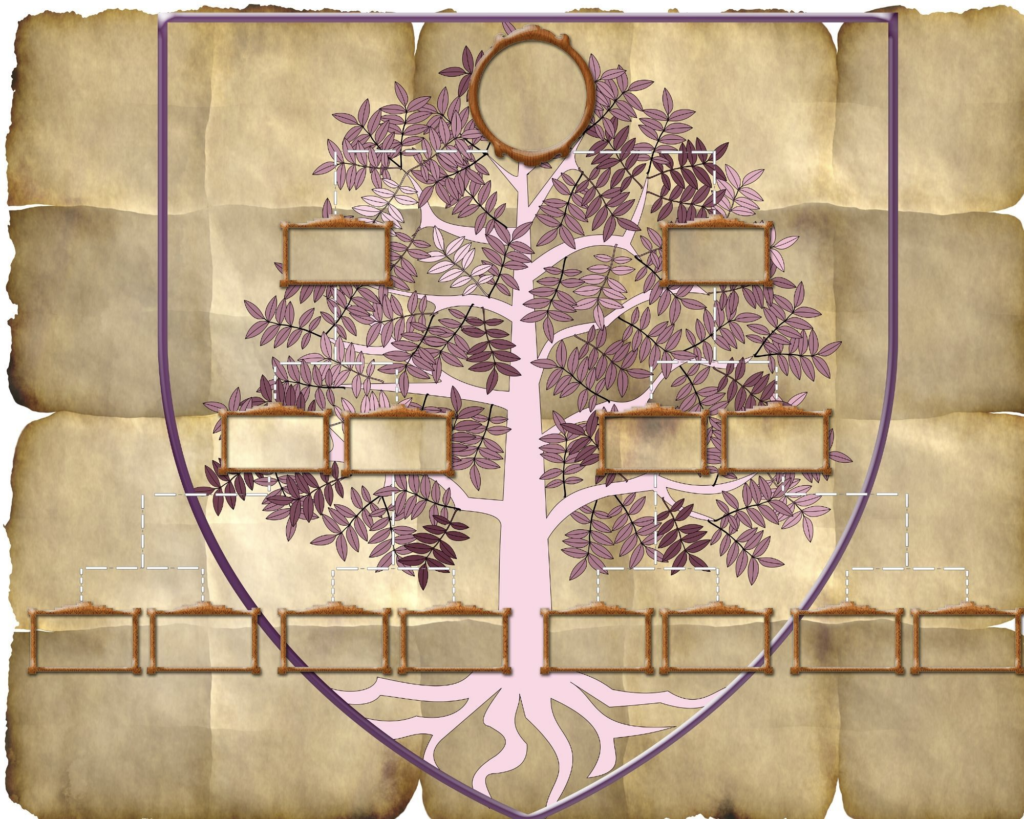
Some people develop an interest in genealogy–tracing the history of their family tree– for very specific reasons. Others hop right in almost on a whim without giving it a lot of previous thought. Whatever the case may be for you, you’ll be happy that you took the initiative.
It’s only natural to be curious about where you come from and to want to learn the unique story of your own family tree. You could discover heroes, new adventures and mysteries, or solve age-old questions. Genealogy research also comes with many other benefits. For instance, studying your family’s history and origins can make it possible for you to:
- Validate your relatives’ favorite family stories.
- See if your family tree contains any famous or noteworthy people among its branches.
- Discover the details of ancestors who participated in major historic events.
- Trace the identity of birth parents, either for yourself or an adopted child in your family.
- Trace details to practical matters like land ownership, medical history, and family inheritances.
- Preserve your family’s time-honored traditions, culture, and legacy for future generations.
In other words, there’s really no downside to exploring genealogy. However, knowing that you’re ready to get started is one thing. Really understanding how to proceed is another matter. The following tips should help you get the ball rolling in the right direction.
1. Spend some virtual time with older relatives.
A family’s history is a rich and complicated thing. It’s about more than dates, places, names, and records. The actual people, as well as their insights and points of view, are large parts of the equation as well. Start your journey by listening to the stories of your older relatives. You might want to take notes or record the conversation.
Ask them to tell you about their own parents and grandparents and what they know about their genealogy. Focus on getting rich details about the communities where they grew up and what life was like for other people they knew. Not only are these stories invaluable for your research, but you’ll both enjoy spending some quality time together.
Your older relatives will most likely also have a lot of practical information likenames and dates that will help you on your journey. The more information you have to start, the easier it will be to dig up more facts.
2. Compile information in a linear fashion.

Researching a family history isn’t like falling down an internet rabbit hole, where it’s fine to randomly drift from one point of interest to the next. It’s more like following the trail in front of you. The best approach is to take a methodical, linear path.
Start with what you already know as true, either according to your own records or those of other family members. Use this to find more clues using a step-by-step approach. Eventually, you’ll find a few that lead you from the oldest generation you already know to the ancestors that preceded them. Research each tidbit of information thoroughly before moving on to the next detail.
Don’t jump ahead, no matter how tempting it may be to do so. Otherwise, you could wind up wasting time and resources tracing the story of someone who isn’t even related to you. Last, but not least, always prove that a connection to a generation or a specific member of your family is correct before regarding it as fact.

3. Keep careful records of your genealogy progress.
Family research almost always uncovers a great deal of information, sooner or later. Don’t wait until you feel like you’re in over your head to set up some kind of organizational system. Stay organized right from the very start, and be sure to record all of your progress throughout every stage of work. You need to be able to see exactly where you are in your research and the specific details you’ve already uncovered.
One way to do this is to draw a pedigree chart. Professional genealogists use this tool to organize information in a way that’s easy to read and understand. Also, since pedigree charts follow widely used formats, it will be easier to share your findings with other family historians in the future. Many genealogy websites also have “family tree” features that can further help with the record-keeping process.

4. Make sure you’re also keeping track of your searches.
Successful genealogyfamily history research isn’t just about keeping track of what you’ve found. It’s also about accounting for every search you’ve performed throughout the process, even if you didn’t uncover anything of note. While it might be tempting to think that you can remember all the details right now, that may not be the case months and years down the line.
If you don’t maintain careful records of all your search efforts, you will duplicate searches at some point. Not only is this a frustrating waste of time, but, without records, you may not even realize you’re doing it. Also, what if another family member wants to build on your research at some point in the future? Knowing what leads not to explore will be a huge help to them.
5. Use maps to create a visual record of your genealogy findings.

Lots of people simply assume that if their family has occupied the same town or county for a few generations, they’ve always been there. Every so often, that does turn out to be the case, but it’s pretty rare. At some point in your research, you’ll probably find out that your ancestors moved from another town or state at some point. Many people even wind up tracing their ancestry to other countries as they dive deeper into their research.
Try keeping track of all the different places your ancestors lived using maps. Studying them can also help you uncover clues about previous homesteads; following major lines of communication like rivers and roads may help reveal why your family moved to another town or state.
You may also find it helpful to research the local history of those areas. Regional history books can help unlock the stories of your ancestors, providing valuable details on daily life. Head to your local library or independent book store to learn more.
6. Don’t forget to consider alternate spellings.
Once you start studying a topic like genealogy, history, or culture in detail, you soon find out there is no such thing as “correct spelling” when it comes to surnames. Numerous common names can be spelled in multiple ways, as can uncommon names. Occasionally, this happens within the singular document, especially if your research goes back to the 19th century or so.
Not everyone could read and write back in the old days. As a result, people often had to rely on the judgment of others when it came to recording names on important documents like marriage licenses, immigration documents, or birth certificates. Your ancestors may not have spelled your family name the same way that your immediate family does today. However, it’s likely that the pronunciation was similar, so keep that in mind when evaluating variants.

7. Don’t assume or take anything for granted.
Detailed research might reveal that your ancestors differed from you in fundamental ways. For instance, you probably didn’t consider getting married at age 14 and becoming a parent by age 16. However, this was common a hundred years ago.
Keeping an open mind will help you from missing key pieces of information. Never assume anything. Be thorough enough to make sure your searches cover all possible scenarios. Again, it is helpful to familiarize yourself with social and cultural norms associated with the time and region you’re researching. You’ll have a better idea of where to look and what questions to ask.
8. Maximize your research time by working effectively.
Each year, more and more records are available online, revolutionizing the way people trace their family history. It’s easier and faster than ever before to locate information since you can hunt for it whenever it suits you, even if it means playing detective at 3:00 AM. However, it’s important to understand that there are limitations that come with online research.
Maximize-Research-Time-Infographic.jpg
Some popular genealogy sites offer researchers access to digitized scans of important documents, making the verification process a lot easier. Leverage the internet to whatever extent you can. Not only is it a time saver, but you’ll be able to use your time more productively when it is time to peruse an archive in person.
9. Share what you’ve learned with the rest of your family.
Of course, there are lots of benefits associated with researching your family tree, but some of the most rewarding will be sharing your discoveries with your relatives. You might discover long-lost family members you never knew you had. Perhaps you can use the information to bring all of your relatives back to the family fold.

Best of all, you’ll be doing so much to help record, augment, and preserve the stories of your ancestors for generations to come. Add your findings to an online genealogy database and share the details with your family.
10. Consider joining a family history or Genealogy society
There are numerous advantages of joining a family history society, so you’ll definitely want to consider choosing one at some point. You’ll gain instant access to newsletters, mailing lists, and databases that can really help you further your research. Any future queries can be shared with other members, allowing those with similar names or research goals to contact you.
Most family history societies also offer access to educational programs and lectures that can help you develop new skills so you can become a better researcher and genealogist. Look for a regional society located close to where your ancestors lived.
Hopefully, these steps will help you gain knowledge and insight into your family tree. You will likely be surprised and delighted by what you find. Perhaps you recently discovered you have Polish ancestors that hailed from Chicago, or a long-lost relative who ran an ostrich farm in Southern California in the early 19th Century. No matter what you uncover, understanding your past is vital to your future. Get started on your family tree today!
Images of America: Glimpse into your Family’s Past
Search by zipcode >


